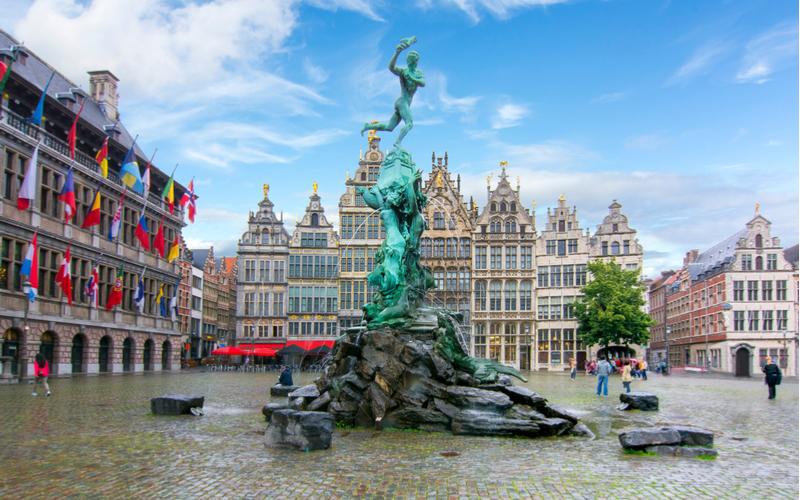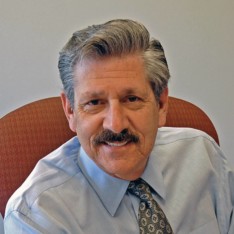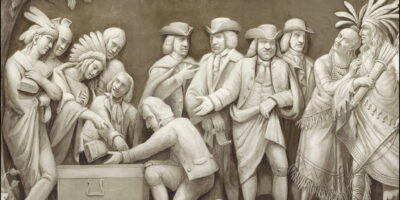A Real Agenda for a Renewal of Free Market Liberalism
To mark its 175th birthday, the highly regarded and widely read British news magazine The Economist published a “manifesto” in its September 15, 2018, issue outlining its agenda for a renewed and relevant political and economic liberalism for the 21st century. But can it restore the liberal ideal at a time when liberalism is under attack from so many directions?
The Economist began publication in 1843, with its primary policy mission as a magazine of news and opinion to fight for the cause of free trade against the prevailing protectionist system that secured high agricultural prices for the landed aristocracy. These high prices were at the expense of the ordinary citizens of the British Isles, who had to pay far more for bread than if less expensive wheat could have been more freely imported from abroad.
A Mixed Voice for Freedom and Interventionism
The free trade advocates, including The Economist, had their great victory three years later, in June 1846, when, in the midst of a severe crop failure that resulted in famine conditions in parts of Great Britain, the agricultural tariff barriers were virtually abolished by an act of Parliament. Until the coming of World War I in 1914, Great Britain was a beacon for the cause of free trade throughout the world. But as the editors of The Economist emphasized this month, the magazine’s advocacy of greater freedom did not stop there. In the 19th century, it supported wider voter participation, an extension of civil liberties for many, social reforms of various sorts, and a generally critical stance against British imperialism, especially in its early decades of publication. But they also explain that in the middle decades of the 20th century, the magazine supported the “safety nets” of the emerging British welfare state and Keynesian fiscal and monetary policies. In the 1980s, its editorial policy shifted back in support of many of Margaret Thatcher’s and Ronald Reagan’s market-oriented reforms. But now, in the wake of the financial crisis of 2008–9, the rise of populist politics, China’s great-power authoritarianism, and other anti-liberal movements, The Economist’s editors have concluded that a renewed case for liberalism needs to be made. They rightly say that if liberalism is to have a future as a set of ideas that once again grab the attention and support of many, it must be inspiring, forward-looking, and in favor of reforms for freedom, opportunity, and prosperity. What, then, is The Economist’s agenda for a renewed political and economic liberalism? To begin with, the editors offer the following diagnoses for the current anti-liberal trends. Populist politics has been fostered by a sentiment among many that the political and economic game is rigged for the benefit of an elite who gain much of the wealth and betterments while those in the middle class stagnate and feel financially frustrated. Typifying this is the fallout from the financial crisis of 2008–9. The banking institutions that helped create the conditions for the crisis, The Economist says, weathered the storm with government bailouts and privileges, while the impact of the economic downturn and the slow recovery has fallen on many in the rest of society. There are, in addition, the crises of globalization and mass migration. Many in the Western industrial countries consider that they have lost or not sufficiently benefited, in terms of job opportunities, from the opening up of the world to trade and capital flows. These changes have been matched by the waves of successful and attempted migration into Europe and the United States from other parts of the world. Some of the citizens of the recipient countries feel threatened with a loss of their own cultures and competitive pressures from immigrant job seekers. Then there are the insecurities about future funding of social security systems for aging populations, the uncertainties of medical care, the growing expensiveness of higher education, and the frustrations over perceived income and social inequalities partly reflected in industrial and corporate concentration of wealth and economic power. What, then, are the answers to these dilemmas that a renewed liberalism can offer? The Economist says it wishes to be both principled and pragmatic — that is, to be true to underlying ideas of liberty, markets, and opportunity, but to advance them in ways that do not radically threaten their support by most in society. What does this mean? The editors want to tax the rich more, but not so much that it undermines incentives for innovation and hard work. They call for greater government regulation of the financial sector, the internet, and social media, and for reversing the concentration of industry, but in ways that do not weaken financial intermediation, the free flow of a wide diversity of ideas, and the ability of private enterprises to determine via competition the best ways to organize themselves and serve consumer interests. The Economist thinks the welfare state is out of control and fiscally unsustainable in the long run, but thinks the answer is to better structure the social safety nets and introduce a negative income tax to transfer wealth to the poorer members of society. Its editors also propose a form of Henry George’s land tax to reduce concentration of wealth derived from property and use it to fund various activities the magazine thinks the government should be doing. The editors advocate greater openness to the free movement of people, but selectively and in an enforceable way to monitor who and how many enter the territories of nations. They want not less government funding of education, but wiser and better-targeted government spending for schooling for young and old citizens. And they want a refashioning of the existing international order of organizations, including the needed military forces to ward off defined threats. Long ago, The Economist moved away from its original classical liberal roots, a liberalism grounded in a philosophy of individual liberty and personal rights; a liberalism fully dedicated to respect for and preservation of private property rights and unrestricted freedom of association and exchange; a liberalism that reasoned that the role of government is to prevent violence and fraud in all human relationships; a liberalism according to which government would see people only as individuals and not as politically charged ethnic, racial, social, or gendered groups claiming special favors and privileges and status on the basis of such collective identities. (See my article “The Beautiful Philosophy of Liberalism.”) In classical liberalism, peace and good will among nations would be fostered as every liberal government would forgo attempts to remake other societies in their own image through political and military intervention into their internal affairs. Concerns for injustices and tyranny in other countries would be handled through private and voluntary support, rather than through governmental entanglements that threaten wider conflicts and that might undermine liberty in the intervener’s own country. (See my article “Practicing the Principles of Non-intervention — at Home and Abroad.”) Likewise, the earlier liberalism considered fiscal extravagance by governments and monetary mischief by central banks to be the sources of economic instability and imbalances. The only way to guard against these dangers was through small governments funded by a balanced-budget fiscal restraint and non-inflationary monetary systems linked to a commodity such as gold. (See my article “Paper Money vs. the Gold Standard: An Explanation.”) But that was then and this is now, it might be said. However, while the institutional circumstances may vary over time, and the arguments may be modified in their focus and concern at different moments in history, the underlying matters of principle, I would argue, remain the same. The fundamental concern in human society is: how shall human beings live together? Shall they be bound together by various forms of compulsion, with some as the masters and others as the servants? Or shall people be recognized as individual human beings possessing certain rights that may not be violated by others, a recognition that results in human interaction based on freedom of association and mutual agreement? If the starting premise is not that no one may be compelled by the threat or use of force to live and act in ways not of their own choosing, what does it mean to refer to a person’s freedom of conscience, or freedom of speech or the press, or freedom of religion, or freedom to acquire, own, and peacefully use private property honestly acquired, or freedom of association with one’s fellow human beings? It does not matter whether one calls this society’s opposite primitive tribalism, feudalism, absolute monarchy, dictatorship, nationalism, socialism, communism, fascism, Nazism, totalitarianism, the interventionist welfare state, or unrestrained majoritarian democracy. While political power may be used in various ways, for different declared ends, and to different degrees (from total tyranny to more limited command, control, and regulation), the common quality and characteristic is the idea that human beings may be coerced into acting (or not acting), into speaking (or not speaking), into associating (or not associating) in ways different from how they would have if left at liberty to decide these things peacefully for themselves. This is the meaning of liberty: the freedom of the individual to exercise individual rights to life, liberty, and honestly acquired property, and in nonviolent ways with others. I may dislike the clothes some people wear or the cut of their hair; I may not agree with the books a person reads or the movies they watch; I may disapprove of the occupation they follow to earn a living, or the terms under which they trade their goods or services with others; I may have strongly held views about other people’s choice in romantic or sexual partners in either short-term or long-term relationships; I may believe there are more and less worthy causes and people deserving of charitable support; or I may sincerely think some people are ruining their lives, given the way they choose to live. In a truly liberal society, however, an individual may not call upon the power of the government to interfere with people’s choices and actions, as long as they have not infringed upon the corresponding rights of others. As Austrian economist Ludwig von Mises once expressed it, “A free man must be able to endure it when his fellow men act and live otherwise than he considers proper. He must free himself from the habit, just as soon as something does not please him, of calling for the police.” What can be more radical and more liberating than to tell each and every human being that their life is their own, that they may live and pursue happiness and purpose in any way they want or desire, that they may come and go as they please, that they may interact with others as they find useful and enjoyable, and that no one may interfere with or prohibit them from doing so, as long as their actions and interactions are honest and peaceful? This, surely, should be at the heart of a restored and renewed agenda for the future of political and economic liberalism. Are there controlling or ruling elites who benefit greater than and at the expense of others in society? Yes, there are. But the question that must be explored is what makes them a privileged group. In a free market, social status and economic success are achieved in one essential manner: devising ways of satisfying the desires of others better than one’s market competitors, who are trying to do the same. No multimillionaire or multibillionaire in a free market system can attain that economic position other than by offering some good or service to their societal fellows in such a way that those others are willing to buy at a price they consider worth paying and in quantities sufficiently great that the sales generate the revenues out of which net profits may be earned by the seller. In a free market, private enterprisers are in competition with each other for both consumer business and the use, hire, and purchase of the means of production (land, labor, and capital). This means businesspeople must offer what they consider the best terms they can afford to attract the resources, capital, and workers as they compete with their rivals. In a vibrant and developed free market economy, there tend to be several employers searching for educated, skilled, and qualified employees to do the jobs needed to produce and offer the products out of which the employers hope to earn profits. Thus, competitive markets are always tending to pay each person their contributing value. What prevents this? When all the underbrush of self-serving rhetoric, political subterfuge, and economic confusion is overcome, the real elites who are the privileged in society owe their status to direct and indirect forms of government regulation, control, prohibitions, and restrictions. Few sectors of the American and other Western economies are as regulated and controlled as financial markets. Banking, in fact, is a “closed shop” — that is, it may not be engaged in outside of the detailed and intensive oversight of government bureaucracies and central banks. It is, for the most part, a financial-intermediation oligopoly, with a relatively few large players possessing their privileged status because of governmental intervention in the banking business. The larger of these banks are usually considered too big to fail since without the banking industry, a complex economy cannot effectively operate, it is usually argued. But it is the existing system of central banking and government-regulated banking that has been the source of the bouts of inflations and recessions, booms and busts that each generation lives through, usually several times. The housing-market collapse of 2008–9 was the result of the interaction between a central bank that had created huge increases in the supply of money and credit, the inducements of federal mortgage agencies (Fannie Mae and Freddie Mac) that promised guarantees on uncreditworthy home loans, and bankers all too eager to take the mortgage money and run, knowing that if or when the mortgages went bad, these government agencies would let them off the hook for their bad lending practices. When the housing market began to tank, the banks were able to dump many of their bad loans into the hands of Fannie Mae and Freddie Mac, or simply sell them off to the Federal Reserve as part of the latter’s massive monetary expansion dubbed quantitative easing. Plus, the most financially worried banks in the last months of the George W. Bush administration had an infusion of taxpayer money in the form of government acquisition of stock in these banks. (Any banks that did not want this money were told they would have to take it; doing otherwise would make any of the other banks accepting that infusion of federal money seem to be in worse financial shape than they actually were.) The banking sector was sheltered from many if not most of the winds of misfortune that befell much of the rest of the economy following 2008–9. This is not free market capitalism, but crony banking that serves the interests of the influential players inside and outside of government. (See my article “Ten Years on: Recession, Recovery and the Regulatory State.”) The solution is not the “more of the same” reforms proposed by the editors of The Economist, but radical transformation of the financial sector with a shift to private, competitive banking without government mismanagement and political manipulation. People should decide the medium (or media) of exchange they find most advantageous in domestic and foreign transactions, rather than be subject to the government-monopoly monetary systems currently in charge around the world. If government control of the banking system was ended along with the regulatory rigidity and politicization of money creation that have nothing to do with freedom in the provision of currencies, what kind of banks would serve the needs of people in changing circumstances might be found out. Such a free banking system would also be without the instabilities of business cycle ups and downs, which the monetary central planners promise, again and again, to get right next time. Furthermore, it would eliminate the capacity of governments to threaten inflation and fiscal abysses by turning to money creation to fund budget deficits that foster a “something for nothing” belief among the uninformed electorate. (See my article “The Case for Monetary Freedom and Free Banking.”) Trying to tweak government pension or health care programs leaves essential decisions concerning people’s retirement and medical needs in the hands of those who do not and never will have the same direct interest in planning for the future and seeing to people’s health care concerns as individual citizens and families themselves. Social Security has never been a viable retirement system; it has been an intergenerational income transfer from the working-age population to the retired segments of society. With an aging population, the system is facing bankruptcy because there are too many retirees relative to a stagnant or shrinking working-age population able to pay into the system. The truth must be told to those lied to and deprived of those taxed portions of their income that might have been privately invested with better earnings outcomes in a free market. The only answer is the total privatization of pension planning outside of the dictates of government. Retirement planning must be restored to the people themselves. There are potentially viable transition plans that could partly return to the citizens what has been confiscated from them. (See my article “Yes, Virginia, There Is No Social Security Santa Claus.”) The same applies to health insurance and medical care. Both of these are regulated and restricted markets in which federal- and state-level bureaucracies micromanage most of what is done in the health care industry. They too are government-created and government-protected oligopolies that serve the interests of the oligopolists. Licensing restrictions and medical-school accreditation rules limit longer-run competition for the benefit of those who already practice medicine to control the number of rivals entering the market. It is taken for granted that in open markets, competition brings about new and improved qualities in the products we buy, and often at lower prices because of cost-efficiencies that competitors must search for to successfully match and exceed what their rivals are doing to win customers for their wares. There is no reason the same could not and would not apply if health insurance and medical care were also fully deregulated and privatized. (See my articles “Why ObamaCare Equals One-Size-Fits-All” and “For Health Care, the Best Government Plan Is No Plan.”) A large number of American families despair of the ever-increasing costs of schooling their children and the poorer quality of the education. A growing number have come to question whether a college degree is worth the time and money, given the financial burden with which graduates leave with diploma in hand. And many wonder what it is that their children are learning in college, when they watch the increasingly collectivist radicalization of the content of what is taught there. A goodly number of parents have already chosen to partly or totally opt out of the government educational system by shifting to home schooling, private schools, or (still government-funded and government-regulated) charter schools. More and more families are grabbing anything that offers real diversity and choice in terms of what and how their children are taught, to the extent that opportunities and after-tax incomes permit. The real liberal educational reform is to move toward the ending of government-funded and government-mandated schooling. The vision of privatizing learning should be a hallmark of a liberal agenda. Opening education to free competition would not only incentivize those desiring to attract student business to improve the pedagogy of teaching, but would offer a diversity of alternative curricula that would reduce, if not end, the current battles for school-board control to impose one course content on everyone. Fully privatized, colleges and universities would have to depend wholly on alumni and donor contributions in addition to student tuitions. They would soon be faced with the reality that what arrogant and ideologically protected professors on taxpayer-funded salaries want to teach may have little or nothing to do with what parent and student payers desire from a four-year-or-more higher education. This reality too would inform part of the market test by reflecting what buyers of educational products want and are willing to pay for rather than what comes from the existing educational establishment’s ivory tower of tenure and subject-matter protectionism. (See my article “Educational Socialism vs. the Free Market.”) Space does not permit discussion of similar ideas on a truly liberal agenda for race relations, a respect for a diversity of views on gender and sexuality, the freedom to move, or private solutions to commonly considered social problems of the needy. But they do exist. Altogether, this would be a real agenda for a revival of an appreciation of and support for a (classical) liberal political and economic revival. (See my articles “A World Without the Welfare State,” “The Case for Liberty, Through Thick and Thin,” “Free Markets, Not Government, Improve Race Relations,” and “The Freedom to Move: Personal Liberty or Government Control,” parts I and II .) It might be said: but even the outlining of what has been considered in this article demonstrates its unreality, its political impossibility. Let me suggest that the same was said about the great liberal reform drives of the past. A perusal of the abolitionist literature of the second half of the 18th century and the first half of the 19th century shows what a daunting and uphill battle was taken on by those who wanted to end human bondage. Slavery had been taken for granted for thousands of years. Ending it seemed not only impossible, but also impracticable, given people’s attitudes, vested interests, or indifferences. First, the antislavery proponents has to make people aware of the cruel injustice of the system with stark and graphic descriptions of how Africans were captured and enslaved, the horrible conditions in which they were carried across the Atlantic to the Americas, and then the brutality of their treatment at the hands of their owners and taskmasters. Second, this was combined with a reasoned argument that the African was just as human as those of European ancestry — that is, just as capable of logical reasoning, emotional feeling, and creative potential if not reduced over the generations to ignorance and coerced obedience as they were kept in their enslavement. Third, most of the antislavery advocates were strongly motivated by their Christian faith, and they told their fellow European and American Christians that all humans, white and black, are equally God’s children, made in his image, and with only the Lord in heaven as the master of men. Slavery was an abomination in the eyes of God, with some claiming the right to lord over others with a whip and a gun. Fourth, they had to address the arguments of Southern slave apologists like George Fitzhugh who insisted that the slaves in the American South were better treated and more secure under benevolent “slave socialism” than free laborers in the Northern states, who were exploited by their capitalist employers. After all, all slaves in the South were guaranteed food, clothing, shelter, medical care, and the training in a skill or craft by their slave master; and the slave owners had an interest in the well-being of their productive property that Northern businessmen did not have once they had paid workers their salaries. The antislavery proponents had to explain that whatever cradle-to-grave security Southern plantation socialism may seem to have provided to those held in bondage, it remained a dehumanizing institution. The slave was denied the dignity and respect that only a free and self-responsible human being can have. Slavery denied slaves the right and opportunity to direct their own lives, in their own honest and peaceful way. After all, the nature of slavery, even a supposedly benevolent slave socialism, meant that another determined and dictated how and where slaves would live, what skills or knowledge they would be permitted to acquire, how and when they might pass the time, and when they would do their commanded work (always under the threat of force if not done as ordered). Under slave socialism, slaves were prevented from being full human beings able to discover their own potential and possibilities and develop the qualities that can only emerge from a life of liberty and independence. At the end of the day, the opponents of human slavery triumphed by winning over the uninformed, the undecided, and some of the indifferent to the idea that here was an institution that no human being of conscience and humanity could actively support or passively acquiesce in. As a result, slavery in the British Empire was ended by an act of Parliament in 1833, which served as a lesson and an inspiration for those in other lands who were against this “peculiar institution.” By the end of the 19th century, slavery had formally ended in most parts of the world, thanks to the efforts of these earlier liberals. If the classical liberals of that earlier time could defeat the prevailing beliefs and vested interests supporting human slavery, after its existence for all of human history, some of us believe the same can be done against the existing system of collectivism, interventionism, and welfare statism in both their authoritarian and democratic forms. Austrian economist and Nobel laureate Friedrich A. Hayek once argued: We must be able to offer a new liberal program which appeals to the imagination. We must make the building of a free society once more an intellectual adventure, a deed of courage. What we lack is a liberal Utopia, a program which seems neither a defense of the things as they are nor a diluted kind of socialism, but a truly liberal radicalism which does not spare the sensibilities of the mighty … which is not too severely practical and which does not confine itself to what appears today as politically possible.… Unless we can make the philosophic foundations of a free society once more a living intellectual issue, and its implementation a task which challenges the ingenuity and imagination of our liveliest minds, the prospects of freedom are indeed dark. But if we can regain that belief in the power of ideas which was the mark of liberalism at its best, the battle is not lost. This is the real challenge and hope for liberty in the 21st century, a revival of a liberalism that returns to its roots in individual liberty, free markets, and strictly limited government. It is a vision that offers far more and far better than the diluted kind of socialism The Economist proposes. A consistent politics and economics of free market liberalism is the only intellectual force that can prevent the success of the collectivist counterrevolutions that continue to threaten the remaining freedoms in our societies today. The Current Challenges Facing Liberalism
The Magazine’s 21st-Century Reform Agenda
The Classical Liberal Ideals of Freedom and Prosperity
The Meaning of Liberty and Human Association
In a Free Market, Wealth Is Won by Serving Others
Government-Created Banking Elites vs. Free Market Banking
Freeing Retirement Planning and Medical Needs From the State
The Free Market — a Real Liberal Education
Ending Slavery Once Seemed Politically Impossible
The Need for a Classical Liberal “Utopian” Vision











